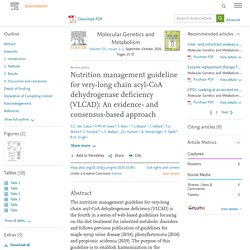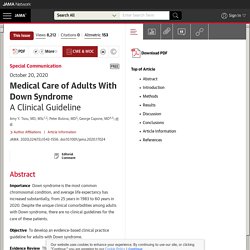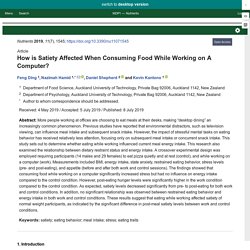

Nutrition & Pain OR Fibromyalgia Reviews. Environmental & Sustainability Guidelines & Reviews. Nutrition and Stress: A Two-way Street.
Are you feeling stressed?

If you’re like most people, chances are the answer is yes. As if the daily pressures of life weren’t enough, the COVID-19 pandemic has pushed stress levels to new heights. A recent study, for example, found that 38% of study participants had experienced some degree of distress due to COVID-19. Moreover, an additional 16% were highly distressed “and likely in need of mental health services.” These relationships are clinically meaningful, yet there has been so little clinical research in this area. Dietary Intake of Endocrine Disrupting Substances Presents in Environment and Their Impact on Thyroid Function. They were commonly used for the production of foams for upholstered furniture, fabrics, and other plastics [45].

There are three types of commercial mixtures: pentabromodiphenyl ether (pentaBDE), octabromodiphenyl ether (octaBDE), and decabromodiphenyl ether (decaBDE) [116]. These compounds can be released during the recycling process and during their exploitation [117]. Artificial Intelligence in Nutrients Science Research: A Review. 1.

Introduction The term “artificial intelligence” was first proposed in 1955 by the American computer scientist John McCarthy (1927–2011) in the proposal of a research project, which was carried out the following year at Dartmouth College in Hanover, New Hampshire [1,2]. Nature of the evidence base and frameworks underpinning dietary recommendations for prevention of non-communicable diseases: a position paper from the Academy of Nutrition Sciences.
Food, nutrition and health have become a distinctive and increasingly popular focus for many people.

The Academy of Nutrition Sciences, formed in 2019, welcomes this widespread interest in the relationship between food and health and the greater scrutiny of the scientific evidence underpinning nutrition advice to the population. It recognises the complex nature of the evidence base and the need for better understanding of how that evidence is selected and brought together to provide advice on diet and health in different settings. This position paper from the Academy is the first in a series of three papers which describe the nature of the scientific evidence and the processes that underpin diet and nutrition advice to populations for prevention of non-communicable diseases, support health claims for specific foods and provide advice to patients with acute and chronic ill health.
Epidemiology and the evolution of diet–disease hypotheses Assigning causality from observational epidemiology. Nutrition management guideline for very-long chain acyl-CoA dehydrogenase deficiency (VLCAD): An evidence- and consensus-based approach. N.D.

Leslie, B.T. Tinkle, A.W. Strauss, K. Shooner, K. ZhangVery long-chain acyl-coenzyme a dehydrogenase deficiency. Hormone therapy, health outcomes and the role of nutrition in transgender individuals: A scoping review. Medical Care of Adults With Down Syndrome: A Clinical Guideline. Importance Down syndrome is the most common chromosomal condition, and average life expectancy has increased substantially, from 25 years in 1983 to 60 years in 2020.

Despite the unique clinical comorbidities among adults with Down syndrome, there are no clinical guidelines for the care of these patients. Objective To develop an evidence-based clinical practice guideline for adults with Down syndrome. Evidence Review The Global Down Syndrome Foundation Medical Care Guidelines for Adults with Down Syndrome Workgroup (n = 13) developed 10 Population/Intervention/ Comparison/Outcome (PICO) questions for adults with Down syndrome addressing multiple clinical areas including mental health (2 questions), dementia, screening or treatment of diabetes, cardiovascular disease, obesity, osteoporosis, atlantoaxial instability, thyroid disease, and celiac disease.
Findings From 11 295 literature citations associated with 10 PICO questions, 20 relevant studies were identified. Box Section Ref ID Box 1. Prospective Study of Dietary Patterns and Hearing Threshold Decline. How is Satiety Affected When Consuming Food While Working on A Computer? 1.

Introduction Globally, cases of obesity are increasing at an alarming rate. The World Health Organization reported that 39% of adults were overweight in 2016, and 13% were obese [1]. Over the past few decades, researchers have been seeking reasons and solutions for this health problem, including the biological control of appetite. Caring for Transgender Patients and Clients: Nutrition-Related Clinical and Psychosocial Considerations - Journal of the Academy of Nutrition and Dietetics.
What is the Healthy Gut Microbiota Composition? A Changing Ecosystem across Age, Environment, Diet, and Diseases. While the microbiome of a healthy individual is relatively stable, gut microbial dynamics can certainly be influenced by lifestyle and dietary cultural choices [56].

A study of European children (fed with the Western diet) and Burkina Faso children (assuming a diet rich in millet/sorghum + local vegetables containing very few lipids and animal proteins) [57] revealed that African children’s microbiota have a remarkable abundance of Prevotella and Xylanibacter. Furthermore, Shigella and Escherichia are widely under-represented.
Another study [58] compared Hadza hunter-gatherers and Italian gut microbiota. Dysphagia: Interprofessional Management, Impact, and Patient‐Centered Care - McGinnis - 2019 - Nutrition in Clinical Practice. Introduction Providing nutrition through oral intake (OI) and the joy of eating is often taken for granted.

It is hard to disagree with the importance of adequate nutrition and fluid intake. S dietary guidelines – Canada’s Food Guide. Treatment of migraine attacks and prevention of migraine: Guidelines by the German Migraine and Headache Society and the German Society of Neurology - Hans-Christoph Diener, Dagny Holle-Lee, Steffen Nägel, Thomas Dresler, Charly Gaul, Hartmut Göbel, Katja. Clinically-assisted nutrition and hydration (CANH)
Low-Calorie Sweetened Beverages and Cardiometabolic Health: A Science Advisory From the American Heart Association. Gold Reports 2018 - Global Initiative for Chronic Obstructive Lung Disease - GOLD. Nutritional Approaches to Chronic Nausea and Vomiting. Health care costs matter: a review of nutrition economics. Jane K Naberhuis,1 Vivienne N Hunt,2 Jvawnna D Bell,3 Jamie S Partridge,3 Scott Goates,3 Mark JC Nuijten4 1Division of Nutritional Sciences, University of Illinois at Urbana-Champaign, Urbana, IL, USA; 2Abbott Nutrition, Research and Development, Singapore; 3Abbott Nutrition, Research and Development, Columbus, OH, USA; 4A2M (Ars Accessus Medica), Amsterdam, The Netherlands Background and aims: As policy-makers assess the value of money spent on health care, research in the field of health economics is expanding rapidly.

This review covers a period of 10 years and seeks to characterize the publication of papers at the intersection of health economics and nutrition. Methods: Relevant publications on nutrition care were identified in the medical literature databases using predetermined search criteria. Nutrition and Vision: How Diet Influences Eye Disease. August 2017 Issue CPE Monthly: Nutrition and Vision: How Diet Influences Eye Disease — Learn the Relationship Between Nutrition and Vision, Key Nutrients for Disease Management, and Supplementation Recommendations By Alexandria Hardy, RDN, LDN Today's Dietitian Vol. 19, No. 8, P. 44 Suggested CDR Learning Codes: 2090, 3070, 3100, 4040 Suggested CDR Performance Indicators: 8.1.3, 8.1.4, 8.3.1, 10.4.4 CPE Level 2 Take this course and earn 2 CEUs on our Continuing Education Learning Library Eye disease is a broad category that includes many subsets, including age-related macular degeneration (AMD),1 glaucoma, and cataracts.
Age is the most significant risk factor for the development of eye disease. This continuing education course reviews the relationship between nutrition and vision with a focus on glaucoma and AMD. The incidence of glaucoma is similar to that of AMD, with age as a leading factor. Interprofessional Education in Nutrition as an Essential Component of Medical Education. Anti-Inflammatory Diet in Clinical Practice: A Review. Defining the Role of the Dietitian in Dysphagia Assessment and Management. Diagnostic criteria for malnutrition – An ESPEN Consensus Statement.
This ESPEN Consensus Statement provides a novel, comprehensive, yet simple, format for the diagnosis of malnutrition. The statement acknowledges the well-accepted BMI cut-off of 18.5 kg/m2 provided by WHO. In addition, it introduces an alternative and partly new format based on the combination of unintentional weight loss, and low BMI or low FFMI, where the latter drives the necessity to use modern techniques for body composition measurements. Regarding BMI, there was unanimous consensus that, in the presence of significant weight loss, BMI levels higher than 18.5 kg/m2 may also reflect sufficiently altered nutritional state to warrant the diagnosis of malnutrition. The proposed cutoff values of 20 (<70 y) and 22 (≥70 y) kg/m2 was the result from consensus within the group.
Validation studies have been launched to possibly confirm these indications. Policy Statement The Use of Artificial Sweeteners. ESPEN guidelines on definitions and terminology of clinical nutrition. Principles of Productivity in Food and Nutrition Services. Patient dining and retail foodservice units are operated and managed separately in many health care food and nutrition services departments. Both, however, are influenced by external forces, menu design, staff skill requirements, purchasing policies, production technologies, and service strategies. Beginning in the early 2000s, there was a major change in patient meal delivery practices. To accommodate patients’ desire to eat what they want, when they want, many hospitals switched to the concept of hotel-style room service.
The rigidity of centralized trayline meal assembly with set meal delivery times was inconsistent with these patient expectations. Alcohol-use disorders: diagnosis and management of physical complications. This guideline covers care for adults and young people (aged 10 years and older) with physical health problems that are completely or partly caused by an alcohol-use disorder. It aims to improve the health of people with alcohol-use disorders by providing recommendations on managing acute alcohol withdrawal and treating alcohol-related conditions. NICE has also produced guidelines on alcohol-use disorders: prevention and alcohol-use disorders: diagnosis, assessment and management of harmful drinking and alcohol dependence.
In April 2017, we reviewed the evidence for corticosteroid treatment for people with severe alcohol-related hepatitis and changed recommendation 1.3.3.1. Recommendations This guideline includes recommendations on: Position of the Academy of Nutrition and Dietetics: Oral Health and Nutrition. Nutritional management of chylothorax.
The Health Effects of Cannabis and Cannabinoids: The Current State of Evidence and Recommendations for Research. Dietary Sources and Bioactivities of Melatonin.